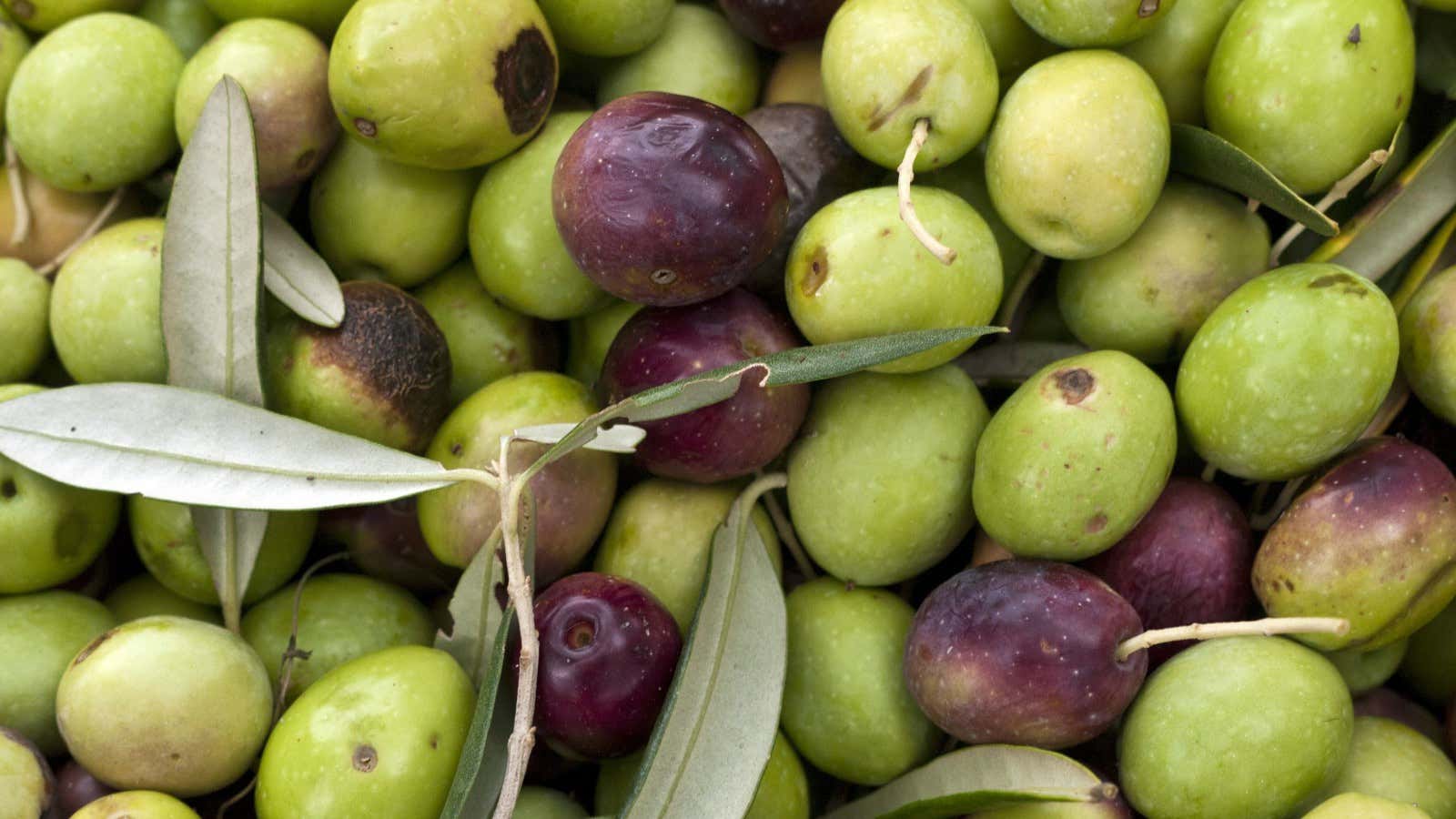A disease of olive trees, identified months ago in Italian groves, is getting worse. In Lecce—the very tip of the country’s “heel”—up to 10% of olive trees reportedly are affected, and may need to be destroyed to stop the bacterial infection from spreading to other Italian trees, or to the rest of the European Union.
The European Food Safety Authority warned of a “major” problem back in January (pdf). The situation has worsened since then. The disease, called Xylella fastidiosa, emerged in 2013 and threatens citrus fruit and grapes, in addition to olives.
A number of measures to control the outbreak were detailed by the EU back in July 2014. They include creating a “buffer zone” around infected areas, and restricting the import and export of plants into and around the bloc.
Measures taken by the Italian authorities have so far not worked well enough to satisfy the rest of Europe. A special EU committee will take up the topic at a meeting this week, Agence France-Presse reported.
The disease threatens further increases to olive oil prices. After last year’s poor European olive harvest, prices charged by some produces reached 60-year highs (paywall). Virgin olive oil futures, traded on a Spanish exchange, also rose (paywall). Olive oil prices could rise again if this year’s crop, due in October, is badly affected.
And beyond that, the effect on farmers—many of whom are smallholders—could be huge. Olive trees can live for hundreds of years, and 11 million of them are in the danger zone.
